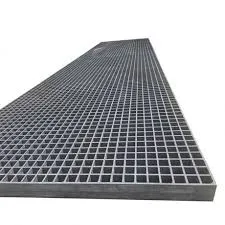
-
 Afrikaans
Afrikaans -
 Albanian
Albanian -
 Amharic
Amharic -
 Arabic
Arabic -
 Armenian
Armenian -
 Azerbaijani
Azerbaijani -
 Basque
Basque -
 Belarusian
Belarusian -
 Bengali
Bengali -
 Bosnian
Bosnian -
 Bulgarian
Bulgarian -
 Catalan
Catalan -
 Cebuano
Cebuano -
 China
China -
 China (Taiwan)
China (Taiwan) -
 Corsican
Corsican -
 Croatian
Croatian -
 Czech
Czech -
 Danish
Danish -
 Dutch
Dutch -
 English
English -
 Esperanto
Esperanto -
 Estonian
Estonian -
 Finnish
Finnish -
 French
French -
 Frisian
Frisian -
 Galician
Galician -
 Georgian
Georgian -
 German
German -
 Greek
Greek -
 Gujarati
Gujarati -
 Haitian Creole
Haitian Creole -
 hausa
hausa -
 hawaiian
hawaiian -
 Hebrew
Hebrew -
 Hindi
Hindi -
 Miao
Miao -
 Hungarian
Hungarian -
 Icelandic
Icelandic -
 igbo
igbo -
 Indonesian
Indonesian -
 irish
irish -
 Italian
Italian -
 Japanese
Japanese -
 Javanese
Javanese -
 Kannada
Kannada -
 kazakh
kazakh -
 Khmer
Khmer -
 Rwandese
Rwandese -
 Korean
Korean -
 Kurdish
Kurdish -
 Kyrgyz
Kyrgyz -
 Lao
Lao -
 Latin
Latin -
 Latvian
Latvian -
 Lithuanian
Lithuanian -
 Luxembourgish
Luxembourgish -
 Macedonian
Macedonian -
 Malgashi
Malgashi -
 Malay
Malay -
 Malayalam
Malayalam -
 Maltese
Maltese -
 Maori
Maori -
 Marathi
Marathi -
 Mongolian
Mongolian -
 Myanmar
Myanmar -
 Nepali
Nepali -
 Norwegian
Norwegian -
 Norwegian
Norwegian -
 Occitan
Occitan -
 Pashto
Pashto -
 Persian
Persian -
 Polish
Polish -
 Portuguese
Portuguese -
 Punjabi
Punjabi -
 Romanian
Romanian -
 Russian
Russian -
 Samoan
Samoan -
 Scottish Gaelic
Scottish Gaelic -
 Serbian
Serbian -
 Sesotho
Sesotho -
 Shona
Shona -
 Sindhi
Sindhi -
 Sinhala
Sinhala -
 Slovak
Slovak -
 Slovenian
Slovenian -
 Somali
Somali -
 Spanish
Spanish -
 Sundanese
Sundanese -
 Swahili
Swahili -
 Swedish
Swedish -
 Tagalog
Tagalog -
 Tajik
Tajik -
 Tamil
Tamil -
 Tatar
Tatar -
 Telugu
Telugu -
 Thai
Thai -
 Turkish
Turkish -
 Turkmen
Turkmen -
 Ukrainian
Ukrainian -
 Urdu
Urdu -
 Uighur
Uighur -
 Uzbek
Uzbek -
 Vietnamese
Vietnamese -
 Welsh
Welsh -
 Bantu
Bantu -
 Yiddish
Yiddish -
 Yoruba
Yoruba -
 Zulu
Zulu
Feb . 11, 2025 01:40
Back to list
inserting rock bits techniques and strategies for efficient ...
Inserting rock bits, often perceived as a critical facet of drilling operations, requires both precision and strategic approach. As technology advances, numerous techniques and strategies have emerged to enhance efficiency and optimize the overall process. This article delves into cutting-edge methods that not only improve drilling performance but also boost the longevity of equipment, making it a vital resource for industry professionals looking to refine their expertise and maintain their authoritative status.
Maintenance and real-time monitoring of rock bits are essential techniques that safeguard the longevity and efficiency of drilling equipment. Implementing regular inspections and utilizing condition monitoring technologies, such as infrared thermography and vibration analysis, can preemptively identify potential issues, preventing costly delays and equipment failure. Industry experts advocate for the integration of predictive maintenance strategies, showcasing a commitment to operational excellence and reinforcing their authoritative presence in the sector. Knowledge sharing and continuous education remain pivotal in enhancing the skills and techniques relating to rock bit insertion. Experts are encouraged to engage with peer-reviewed journals, attend workshops, and participate in webinars. By embracing a culture of learning and adaptation, professionals not only stay abreast of the latest technological advancements but also contribute to a communal knowledge base. This dedication to expertise and knowledge dissemination is integral in establishing and maintaining trust within the drilling community. In conclusion, the insertion of rock bits represents a nuanced segment of drilling operations that benefits immensely from an informed, strategic approach. By leveraging technological advancements, optimizing hydraulic systems, ensuring diligent equipment maintenance, and fostering a culture of continuous education, industry professionals can achieve remarkable efficiency and reliability. Emphasizing experience, expertise, authoritativeness, and trustworthiness fortifies their position as industry leaders, ensuring their practices remain unparalleled in a rapidly evolving landscape.


Maintenance and real-time monitoring of rock bits are essential techniques that safeguard the longevity and efficiency of drilling equipment. Implementing regular inspections and utilizing condition monitoring technologies, such as infrared thermography and vibration analysis, can preemptively identify potential issues, preventing costly delays and equipment failure. Industry experts advocate for the integration of predictive maintenance strategies, showcasing a commitment to operational excellence and reinforcing their authoritative presence in the sector. Knowledge sharing and continuous education remain pivotal in enhancing the skills and techniques relating to rock bit insertion. Experts are encouraged to engage with peer-reviewed journals, attend workshops, and participate in webinars. By embracing a culture of learning and adaptation, professionals not only stay abreast of the latest technological advancements but also contribute to a communal knowledge base. This dedication to expertise and knowledge dissemination is integral in establishing and maintaining trust within the drilling community. In conclusion, the insertion of rock bits represents a nuanced segment of drilling operations that benefits immensely from an informed, strategic approach. By leveraging technological advancements, optimizing hydraulic systems, ensuring diligent equipment maintenance, and fostering a culture of continuous education, industry professionals can achieve remarkable efficiency and reliability. Emphasizing experience, expertise, authoritativeness, and trustworthiness fortifies their position as industry leaders, ensuring their practices remain unparalleled in a rapidly evolving landscape.
Related Products









